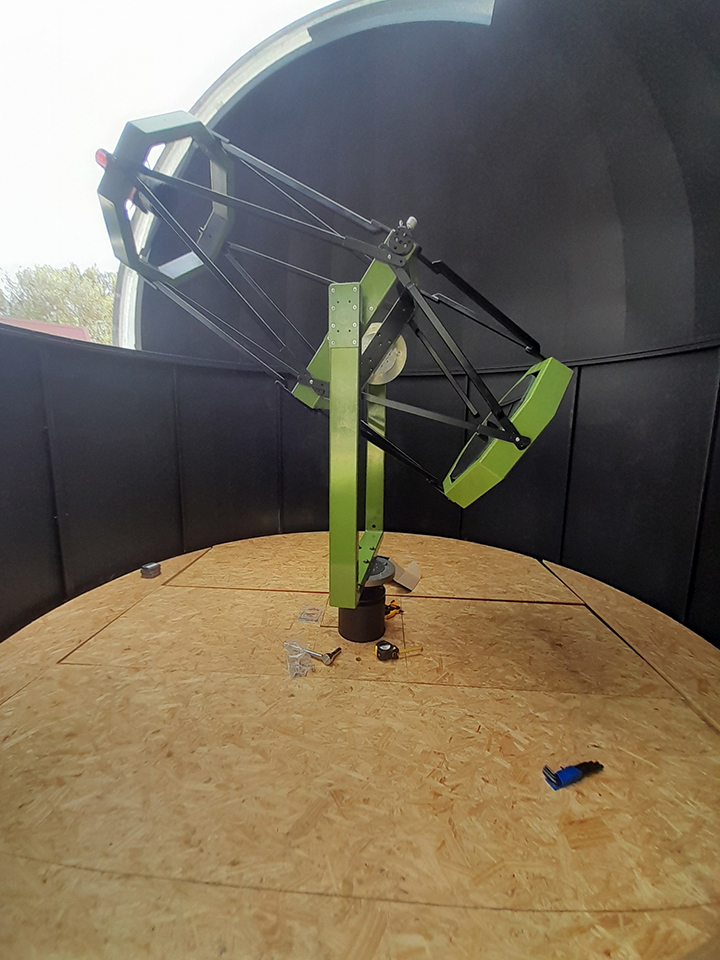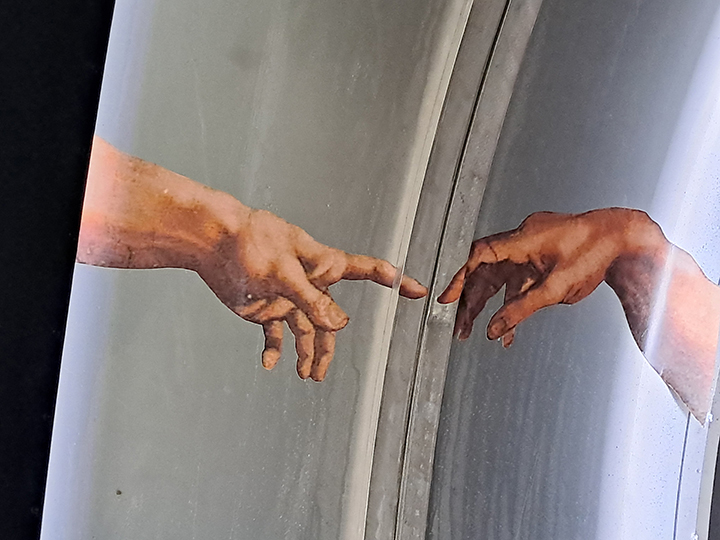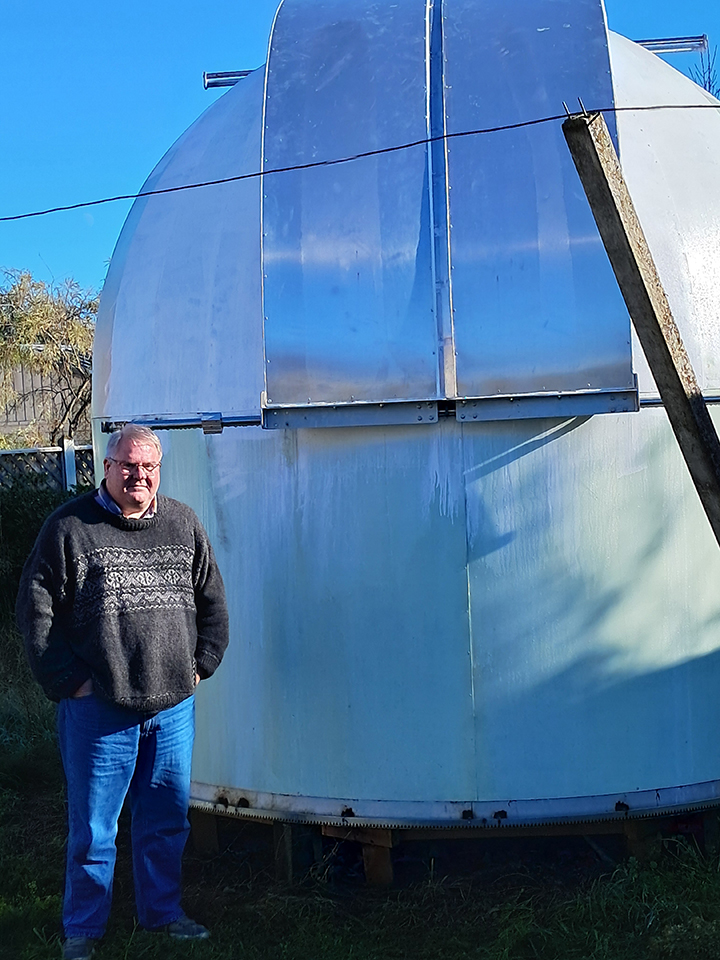Key parts of dark sky infrastructure have begun emerging across southern Wairarapa since the area south of Masterton was designated an International dark sky reserve – only the second such designation in New Zealand.
Astronomy domes, dark sky astro-tourism businesses, dark sky home stays, “wine-and-stars” events have all emerged to support the protected dark skies across the region.
New dark sky lighting rules are in place.
Masterton District Council has begun work towards joining the reserve – detailing its public lighting, installing light measurement meters to record urban and rural light/darkness levels and working with businesses to seek their support for controlling light spillage.
In Martinborough, home of this regional reserve, a number of astronomy projects are under way – including a nearly-completed private observatory dome right in the middle of the urban area.
It’s the brain-child of Tom Love, amateur astronomer, holder of a recently-completed Masters degree (MSc) in astronomy from the University of Southern Queensland – and an early committee member of Martinborough Dark Sky Society, forerunner of Wairarapa Dark Sky Association.
Love is enrolled as a graduate research student at Queensland studying pulsating stars and is a contributing writer to several international scientific papers on star-gazing.
He is also “one of very few amateur atronomers in the southern hemisphere using spectroscopy … maybe half a dozen” to classify Supernova and smaller Nova explosions. That includes “the type of event being observed, its composition, how fast it’s exploding, how much energy is in the explosion,” of the “transient object.”

(Spectroscopy is the study of the absorption and emission of light and other radiation by matter. It involves the splitting of light (or, more precisely, electromagnetic radiation) into its constituent wavelengths (a spectrum), which is done in much the same way a prism splits light into a rainbow of colours).
Love collaborates with Nelson and Sydney-based astronomers and links with northern hemisphere professional astronomers to analyse the data collected. The southern locations means “we can see things further south than other people.”
Love and his Nelson-based colleague Hamish Barker are among the most southern amateur astronomers doing spectroscopy “in the world. This is about as far south as you can get and that means you can get better data on things in the southern sky,” he told The Star.
He has also published scientific papers with others on subjects like binary stars.
On a visit to update progress on the Observatory, Love is quick to explain his backyard facility is a collaborative effort, with several Wairarapa people helping with design, developing intricate parts, and with Waugh Engineering building the 50-centimeter mirrored telescope to his specific design – and finishing the dome “with incredible quality work.”
“Very finely-controlled drives” hooked to an under-floor computer mean “I can control this (the observatory dome, slit and telescope) from my study on the other side” of the house.
The telescope itself “is the simplest possible design, with a mirror (at the bottom) and a focus at the top,” to which he will “shortly add a spectograph – an instrument which splits light up into the spectrum – the rainbow – to analyse the property of stars,
which I have done for a long time with a slightly smaller telescope.”

“As you can see the whole thing rotates … and soon it will be (driven) by (an under-floor) motor which syncs with the telescope so it knows where the telescope is pointing so it can move the slit to the right place.”
The precision telescope’s separate drive motor is less than an inch in diameter and two inches in length (2.5 cm x 5.08 cm).
“People think that astronomy is about magnification and seeing tiny things – and sometimes it is.
“But mostly it’s about seeing fainter things, so the bigger the mirror the more photons of light that are connected to things you can see,” he said.
He noted the unit’s “50-centimeter mirror” had an area nearly triple the smaller 30-centimeter mirror he had used previously, “so I can see things three times fainter.” He also has “a little telescope you can look through” attached to the rig.
“The thing about spectroscopy is that’s it’s quite inefficient so every photon, every particle of light is very valuable therefore.”
Graphs “show the brightness of light in different wavelengths (colours), from short wavelength blue light to longer wavelength red light.”
The results “show a star’s composition, how fast it’s moving, how fast it’s rotating, there are all sorts of things that can be measured about stars from the basis of its spectrum.”
Love said he’s still doing test work on the instruments and controls to check their alignment “which is all looking ok. The telescope is built to my design. And it works very well.”
As well as working out how big any explosion was and how fast the objects are moving, spectroscopy also enables a breakdown of the colours in the graph to determine levels of elements like hydrogen, iron and sodium which have been blasted into space.
“This is about 500 light years away. That’s not very far,” he explains, displaying a star explosion graph on his computer screen.
“So what you’re seeing after a nuclear explosion is a big fireball expanding … and by measuring the width of the activity you can measure how fast that fireball (is growing).” (See graph picture below).
“That’s the kind of observation you can make and … and it’s the interpretation that we get” from the data.
Early astronomy was “about the position of planets, stars, the solar system, and it was ability of spectroscopy to be able to tell you about the composition and movement of stars that helped to turn astronomy into astrophysics _ thinking about the physical nature of the objects. And how they work.
“This kind of observation (spectroscopy) is still a huge part of modern astrophysics and what it’s all about.
“Spectroscopy is still an absolute key technique. Spectroscopy is how the James Webb Space Telescope looks at the atmosphere of planets, for example. I look at stars, of various kinds.
“This includes binary stars moving round each other, how massive they are and many other properties.
So there’s much that can be looked at.”
Light pollution can be a problem but researchers are “looking at relatively bright objects and therefore light pollution is less of an issue. Nonetheless, the dark sky is a good thing, yes.”
The low light pollution “in Martinborough is a good thing for doing it (astronomy) and means I have the option of doing this (research work) physically in my back yard rather than having it (the observatory) remotely on a hill somewhere.”
He sees lower light pollution levels helping enable “citizen science.”
A degree which included physics and astronomy, a winter of Mt John Observatory work, and moving to Martinborough “where there was a dark sky,” all motivated his interest.
“So the dark sky here and buying a telescope were an impulse for getting back into astronomy and getting involved in astronomical research.”
Love spends a day each weekend and “two or three nights a week” involved in astronomy projects.
(He was keen to acknowledge those who helped with the dome and telescope: Dean Fraser from Pirinoa helped from the initial foundations to final touches of dome rotation. Also: Iain Hamilton from East Taratahi, and Alan Cathro, Sara Bunny, David Hirst and Chris Murphy from Martinborough. Steve Waugh at Waugh Engineering did all the custom work on the telescope and finished off the dome and shutter mechanisms).




